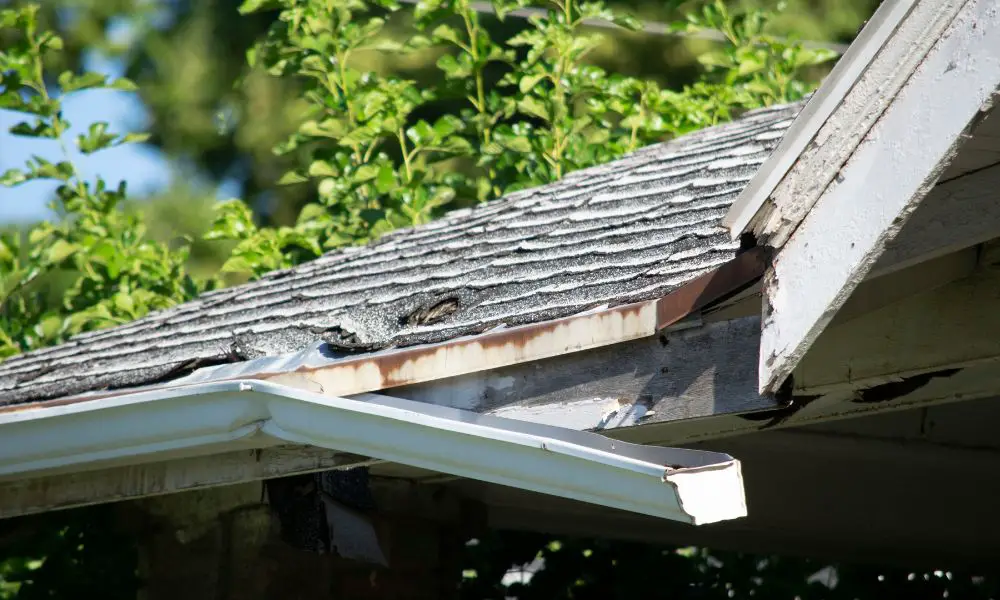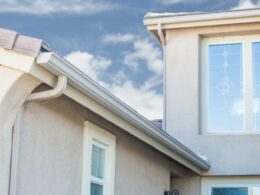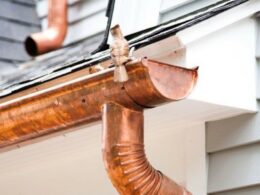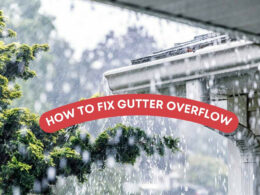Table of Contents Show
As a seasoned homeowner and contractor with a wealth of experience in various house projects, I’ve encountered numerous questions from clients. One of the most common inquiries is whether it’s feasible to replace gutters without undertaking a full roof replacement.
This question is particularly relevant for those looking to maintain or enhance their home’s functionality and curb appeal without incurring the significant cost and time involved in a complete roof overhaul.
Gutters play a crucial role in protecting your home from water damage. They channel rainwater away from the foundation, safeguarding your home’s structural integrity. However, like any part of a house, gutters don’t last forever.
Whether due to weather wear, material degradation, or simply time, there comes a moment when replacement becomes necessary.
In this article, we’ll explore the practicalities and considerations of replacing gutters while keeping your existing roof intact. This approach can offer a cost-effective solution to homeowners seeking to preserve their property’s condition.
Can You Replace Gutters Without Replacing Roof?
Yes, you can replace gutters without replacing the roof. This is a common practice in home maintenance, particularly when the gutters are damaged or aged but the roof remains in good condition. Replacing gutters separately can be cost-effective and less disruptive than a full roof replacement. It’s important to ensure that the new gutters are compatible with your existing roofing system and installed professionally for optimal performance and longevity.

Assessing the Condition of Your Roof
When considering gutter replacement, it’s equally important to assess the condition of your roof. A well-maintained roof is crucial for the overall health of your home, and understanding its condition can inform your decision about gutter replacement.
How to Tell if Your Roof Needs Replacing
- Age: Most roofs have a lifespan of 20-30 years. If yours is approaching or has exceeded this age, it might be time for a replacement.
- Visible Damage: Look for missing, cracked, or curled shingles, as these are clear signs of wear.
- Leaks or Water Damage: Check your attic or upper floors for signs of water ingress, which could indicate a failing roof.
- Sagging: A sagging roof deck is a serious issue, often indicating structural problems.
- Moss and Algae Growth: While this can be a cosmetic issue, excessive growth can damage roofing materials.
The Relationship Between Roof Condition and Gutter Replacement
- Integrated Systems: Your gutters and roof work together to protect your home from water damage. A failing roof can compromise new gutters, and vice versa.
- Installation Considerations: When installing new gutters, it’s crucial to ensure they are compatible with your current roof. If your roof is near the end of its life, replacing both can be more efficient.
- Preventive Measure: Sometimes, addressing minor roof repairs during gutter replacement can extend the life of your roof and ensure that your new gutters perform effectively.

Benefits of Replacing Gutters Without a Full Roof Replacement
Opting to replace just the gutters instead of undertaking a full roof replacement offers several key benefits, focusing on cost-effectiveness and minimizing disruption to your home.
Cost Savings and Efficiency
- Lower Costs: Replacing only the gutters is significantly less expensive than a full roof overhaul. It allows you to address specific issues without the hefty price tag of complete roof replacement.
- Focused Investment: You can invest in high-quality gutter materials and professional installation, ensuring long-term performance without the extensive costs associated with roofing projects.
- Energy and Time Efficient: Gutter replacement is a quicker project compared to roof replacement, saving both time and energy.
Minimizing Disruption to Your Home
- Less Intrusive: Gutter replacement typically involves less noise, mess, and overall disruption than roof work. It’s a less invasive process for your daily life.
- Quicker Turnaround: The process is usually completed within a day or two, as opposed to the extended timelines needed for roof replacements. This means less time with workers on your property and a quicker return to normalcy.
- Safety: With less extensive work required, there’s a reduced risk of accidents or damage to your property, providing peace of mind.
In essence, replacing your gutters without a full roof replacement is a practical and economical choice for many homeowners. It allows you to maintain and improve your home’s water management system with minimal financial strain and disruption to your household.













